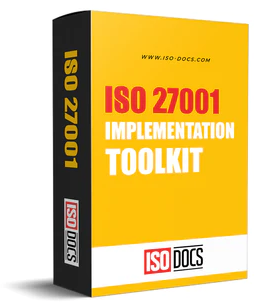What Is Consequences?
Meaning And Overview
The consequences that apply to ISO 27001 context are the results, impacts and effects whether they are positive or negative of complying with or lacking to comply with the ISO 27001 information security management standard. These implications include operational, legal, monetary, reputational, and security implications of a concern or organization. It is crucial to understand these implications in order to realize the full implication and significance of the effective implementation of ISO 27001. The implications can be associated with risks observed in the process of implementation, disciplinary measures in case of violations, and the business as a whole in terms of continuity and trust.

Why Is It Important To Know Consequences?
To gauge the significance of compliance and non-compliance in ISO 27001, organizations should be aware of the consequences of both natures. The awareness of the possible consequences would compel stakeholders at all levels to invest resources and ensure a security culture. Based on this understanding, risk treatment can be prioritized, business goals and security measures aligned, and above all, customer trust and regulatory compliance maintained.
Significance Of Consequences in ISO 27001
- Ensures Accountability: Clear consequences will ensure accountability adoption by both employees and management as they will make an informed decision about what happens in the event of what actions as consequences accountability will be embraced and individuals will be disciplined in information security.
- Facilitates Risk Mitigation: Knowing how risks work and what happens when they are breached guess organizations to avoid over-investing in these cases and to deploy other resources that are more effective in mitigating risks in association.
- Enhances Compliance: Familiarity of legal and regulatory consequences would mean compliance with the requirements imposed by the outside world which would save organizations fines and sanctions.
- Protects Reputation: Once a business has undergone certification, meeting the standard maintains the trust and reputation of both the client and in their business, and as such invaluable to the business of continuing.
- Promotes Continual Improvement: The consequences aspire organizations to correct nonconformities, thus making a continuous improvement culture.
- Enhances Employee Behavior: An ISO 27001 disciplinary process, including the consequences of any infraction course, can shape employee behavior and avoidance of an insider threat.
Implementation Of Consequences In ISO 27001
- Establish Disciplinary Policies: Create and enact clear policies on the result of violating information security as well as their penalties within the confines of the law and regulations.
- Integrate Consequences with Risk Management: Connect the knowledge of consequences to the risk evaluation and the management efforts in the organization by ranking control measures according to the impact they may have.
- Document Nonconformities: Establish a program to identify, document and evaluate nonconformities on information security and their effects, and incorporate them into corrective action plans.
- Communicate to the Employees: Conducting awareness training that clearly speaks about the potential outcomes of policy violations will assist in making employees comprehend their roles.
-
Top management involvement: The top management must buy into the implications of the consequences framework and must provide adequate funding to ensure that the implications are effectively enforced.
- Monitor and Review: Conduct an audit of compliance to disciplinary procedures and corrective actions by periodically reviewing effectiveness of consequences in a bid to adjust and enhance ISMS.
Best Practices To Manage Consequences In ISO 27001
- Apply a Structured Disciplinary Process: Enforce a systematic, reasonable, and an open disciplinary procedure to deal with the infractions and ensure that all workers are treated in a similar manner.
- Translate Legal Requirements into Consequences: Revise the existing disciplinary actions and policies so that they satisfy local laws and regulations and remove the threat of legal liability.
- Update policies regularly Review and update consequence: Related policies to follow changes in threats, business environment, and regulations.
- Encourage a Security Culture: Create an organizational culture that does not consider consequences to be only punishments; instead they are a normative security posture.
- Ensure Communication and Documentation: Ensuring that there are records of any incidence, nonconformities and consequences being introduced, and documenting the learning of such cases throughout the organization.
- Integrate with Continuous Improvement: Use consequences management feedback to drive ongoing improvement of the controls and processes.
Conclusion
In the context of the Information Security Management System, the particular aspect of consequences as addressed in ISO 27001 is critical. Appropriate consequences motivate compliance, protect an organization’s reputation, enable corrective action, and improve in a sustained manner. Organizations that manage the consequences of breaches and nonconformities will improve security, protect reputation, and support compliance in a more sophisticated manner. In this regard, embracing consequences as an integral part of ISO 27001 is about more than compliance; it is about a secure and resilient business.


